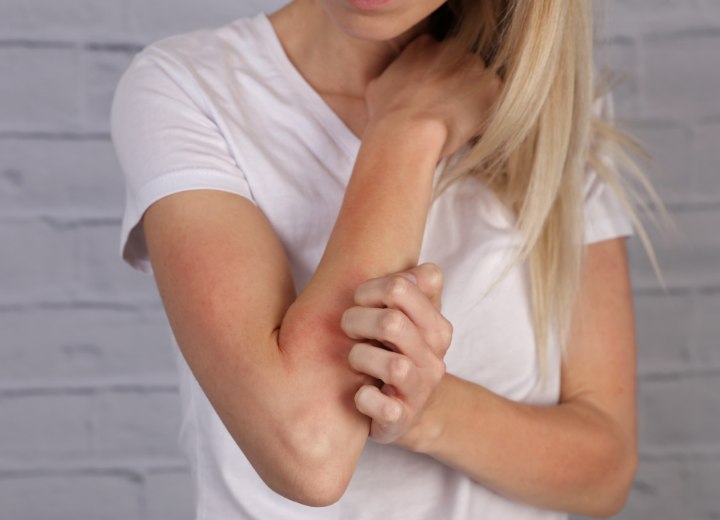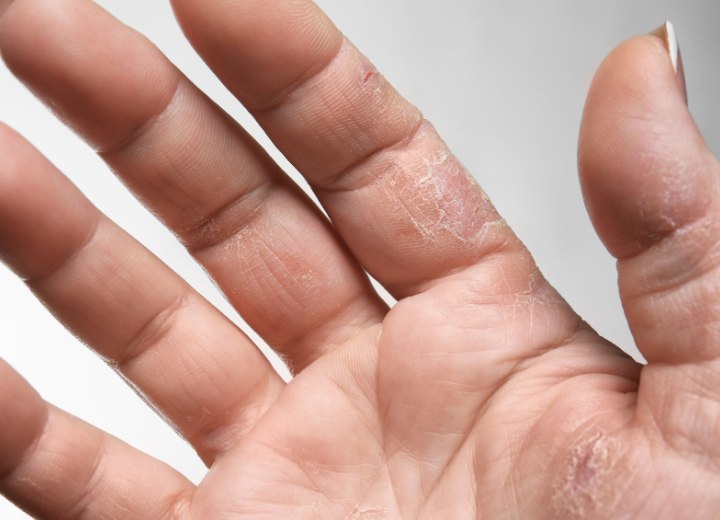Hairdressing Industry and Dermatitis

Question: What is Occupational Dermatitis?
Answer: Occupational dermatitis is an inflammatory reaction of the skin caused by, or made worse by, exposure to irritants or allergens in the workplace. Irritant contact dermatitis can flare up quickly following undefended exposure to strong chemicals such as bleach. Similarly, allergic response can be almost instantaneous or develop over time.
• Dryness
• Redness
• Itching
• Flaking or scaling
• Cracking or blistering
• Pain
Question: Is dermatitis prevalent in the workplace?
Answer: HSE reports the following dermatitis statistics based on a ratio to 100,000 workers:
Motor vehicle panel beaters = 12 employees
Printers = 18 employees
Metal workers = 47 employees
Hairdressers = 98 employees
These are reported incidents, but it is recognized that up to 70% of employees in the hairdressing industry may suffer some form of skin damage.
Question: Why is it so high among hairdressers?
Answer: The main cause is frequent contact with chemicals in hairdressing products when shampooing, conditioning, coloring or bleaching:
• Washing, shampooing, conditioning, or coloring hair with bare hands.
• Handling equipment soaked in chemicals.
• Touching contaminated clothing, tools, or containers.
• Chemical splashes onto skin when preparing hairdressing products for use.
• Aerosol or dust settling on skin or being picked up from touched surfaces.

Answer: Yes, it is. In summary: The salons' main Health and Safety Policy document must be documented where there are five or more employees. Data sheets should be held for all substances and chemicals purchased. This is a requirement under the CHIP Regulations. Once data sheets are attained, management is able to undertake a competent risk assessment under the Control of Substances Hazardous to Health Regulations.
An assessment should be completed and held for all hairdressing products. Employees must be made aware of the hazards involved in the products they are using. Management must monitor for early symptoms of dermatitis. Employees should be trained in control measures instigated and records kept. It would also be helpful to attempt to determine if an applicant for employment has any allergies.
Question: What controls should hairdressers consider and implement?
Answer: Hairdressing personnel should be trained to wear disposable, non-latex gloves when undertaking wet operations.
• Choose a longer-length glove; fold the cuff back to prevent water from running down the arms.
• Change gloves between clients.
• Pick a smooth glove to prevent hair snagging.
• Make sure their gloves fit well.
• Remove gloves by peeling them down from the cuff, while avoiding touching skin with a wet glove.
• Use a fresh pair of gloves for each new task.
• Make sure gloves are worn when cleaning up spills.
• Rotate jobs to minimize wet work.
• Develop the habit of examining their hands for any potential symptoms such as dryness, flaking, or inflammation. Dry their hands thoroughly with a soft cotton or paper towel and understand that this is part of their skincare regimen. Moisturize after washing hands as well as at the beginning and end of the workday.
This editorial has been provided by JLT Business Insurance Services.
See also:
Hair stylists and occupational diseases
Hair color allergies
Insurance for hairdressers